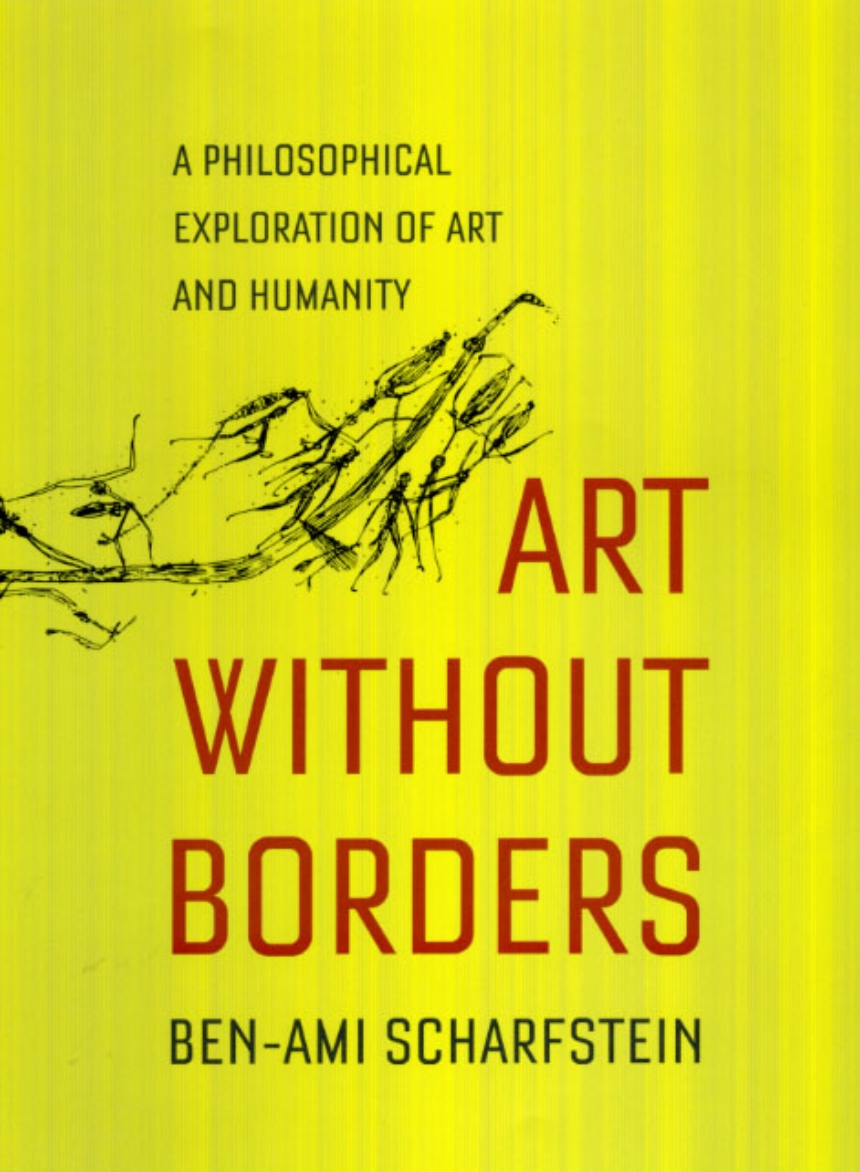Art Without Borders
A Philosophical Exploration of Art and Humanity
People all over the world make art and take pleasure in it, and they have done so for millennia. But acknowledging that art is a universal part of human experience leads us to some big questions: Why does it exist? Why do we enjoy it? And how do the world’s different art traditions relate to art and to each other?
Art Without Borders is an extraordinary exploration of those questions, a profound and personal meditation on the human hunger for art and a dazzling synthesis of the whole range of inquiry into its significance. Esteemed thinker Ben-Ami Scharfstein’s encyclopedic erudition is here brought to bear on the full breadth of the world of art. He draws on neuroscience and psychology to understand the way we both perceive and conceive of art, including its resistance to verbal exposition. Through examples of work by Indian, Chinese, European, African, and Australianartists, Art Without Borders probes the distinction between accepting a tradition and defying it through innovation, which leads to a consideration of the notion of artistic genius. Continuing in this comparative vein, Scharfstein examines the mutual influence of European and non-European artists. Then, through a comprehensive evaluation of the world’s major art cultures, he shows how all of these individual traditions are gradually, but haltingly, conjoining into a single current of universal art. Finally, he concludes by looking at the ways empathy and intuition can allow members of one culture to appreciate the art of another.
Lucid, learned, and incomparably rich in thought and detail, Art Without Borders is a monumental accomplishment, on par with the artistic achievements Scharfstein writes about so lovingly in its pages.
Read an excerpt.
558 pages | 9 halftones | 6 x 9 | © 2009
Art: Art Criticism, Art--General Studies, Middle Eastern, African, and Asian Art
Philosophy: Aesthetics, General Philosophy
Reviews
Table of Contents
Preface
Acknowledgments
Note on Transliteration
1 AN OPEN AESTHETICS
Why There Is Art · The Aesthetic Dimension of Life · Being Aware · Seeing · Remembering · Preferring · Forgetting Self · Grasping · Theorizing
2 SELFLESS TRADITION
Tradition, Traditionalism · Problems Anthropologists Encounter and Create · The Anthropology of Art · Ceremonial Celebrations of Life · Memory Preserved · Authenticity · Ephebism · Four Symbolic Images · From Apprentices to Masters · Exacting Rules · Classicism and Archaism · Chinese Connoisseur, Archaist, Collector · Creative Copying from the Chinese Past · Classicism in European Art · Creative Copying from the European Past · The Ideal of the Anonymous Craftsman · The Metaphysical Ideal
3 EGOCENTRIC INNOVATION
Egocentricity against Tradition · Inspiration, Heroism, and Uniqueness ·Islamic Hero-Artists · Hero-Artists of the European Renaissance · “Genius” · Genius, Melancholy, Madness · The Romantic/Egocentric Artist · Chinese Romantic/Egocentric Amateurs · Indian Romantic/Egocentric Artists · “Primitive” Romantic/Egocentric Artists · African Artists’ Creative Egocentricity · All Alike, All Different
4 INTERSECTING WORLDS AND IDENTITIES
Creative Chaos · The Camera’s Liberating Light · Historical Relativity ·The Encompassing Influence of Japan · Gauguin and Other Savages·European Borrowing · Japanese and Chinese Borrowing · The Excessive Past of Chinese and Western Art ·Symbolic Deaths and Erasures of the Past · Modern “Primitives”: Creating and Debating Identities
5 THE COMMON UNIVERSE OF AESTHETIC DISCOURSE
Human Perceptual and Emotional Responses ·Old and New Criteria of Judgment · Fame and Price · Diminishing the Subjectivity of Judgment · Local Art and Universal Art· Judging Art Fairly · Fusion, Oscillation, Realism, Equilibrium, Beauty · The Snow Woman as a Universal Paradigm· The West: Intimations of Neoplatonism · Africa: Statue-like Beauty and Goodness and Clarity· India: Depersonalized Emotion · China: Reverberations of the Life-Breath · Japan: Beauty Tempered by Regret · The Common Universe of Aesthetic Discourse · Final Thoughts
Notes
Index